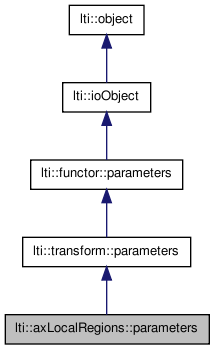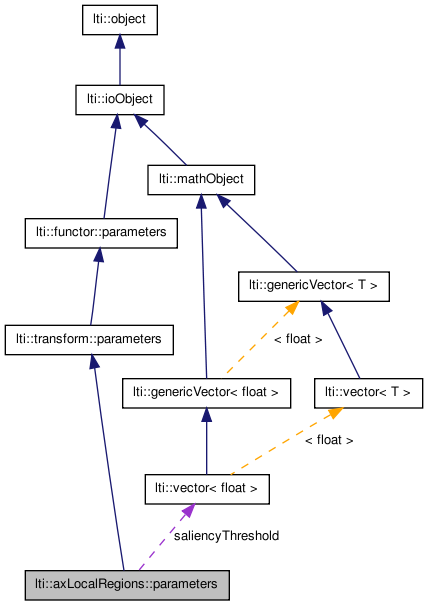

|
latest version v1.9 - last update 10 Apr 2010 |
|
the parameters for the class axLocalRegions More...
#include <ltiAxLocalRegions.h>


Public Member Functions | |
| parameters () | |
| parameters (const parameters &other) | |
| ~parameters () | |
| const char * | getTypeName () const |
| parameters & | copy (const parameters &other) |
| parameters & | operator= (const parameters &other) |
| virtual functor::parameters * | clone () const |
| virtual bool | write (ioHandler &handler, const bool complete=true) const |
| virtual bool | read (ioHandler &handler, const bool complete=true) |
Public Attributes | |
| double | orientationWindowFactor |
| int | binsInOrientationHistogram |
| int | firstLevel |
| int | lastLevel |
| vector< float > | saliencyThreshold |
| int | firstMaximumFilterSize |
| float | maximumFilterAdaption |
the parameters for the class axLocalRegions
| lti::axLocalRegions::parameters::parameters | ( | ) |
default constructor
Reimplemented from lti::transform::parameters.
| lti::axLocalRegions::parameters::parameters | ( | const parameters & | other | ) |
copy constructor
| other | the parameters object to be copied |
Reimplemented from lti::transform::parameters.
| lti::axLocalRegions::parameters::~parameters | ( | ) | [virtual] |
destructor
Reimplemented from lti::functor::parameters.
| virtual functor::parameters* lti::axLocalRegions::parameters::clone | ( | ) | const [virtual] |
returns a pointer to a clone of the parameters
Reimplemented from lti::transform::parameters.
| parameters& lti::axLocalRegions::parameters::copy | ( | const parameters & | other | ) |
copy the contents of a parameters object
| other | the parameters object to be copied |
Reimplemented from lti::transform::parameters.
| const char* lti::axLocalRegions::parameters::getTypeName | ( | ) | const [virtual] |
returns name of this type
Reimplemented from lti::transform::parameters.
| parameters& lti::axLocalRegions::parameters::operator= | ( | const parameters & | other | ) |
copy the contents of a parameters object
| other | the parameters object to be copied |
| virtual bool lti::axLocalRegions::parameters::read | ( | ioHandler & | handler, | |
| const bool | complete = true | |||
| ) | [virtual] |
read the parameters from the given ioHandler
| handler | the ioHandler to be used | |
| complete | if true (the default) the enclosing begin/end will be also written, otherwise only the data block will be written. |
Reimplemented from lti::functor::parameters.
| virtual bool lti::axLocalRegions::parameters::write | ( | ioHandler & | handler, | |
| const bool | complete = true | |||
| ) | const [virtual] |
write the parameters in the given ioHandler
| handler | the ioHandler to be used | |
| complete | if true (the default) the enclosing begin/end will be also written, otherwise only the data block will be written. |
Reimplemented from lti::functor::parameters.
Number of bins used in the orientation histogram.
Default value 32
first level to consider.
Must be greater 0 and smaller or equal than lastLevel.
Default: 2
To detect the local maxima, a lti::maximumFilter is used.
The size of the kernel used for the firstLevel is the one given here. It should be an odd number.
Default value: 5
last level to consider.
Must be greater or equal than firstLevel
Default: 6
Saliency threshold values per level.
The elements of the vector should be between 0 and 1. The element of the vector with the same index as a any given level of the internally computed pyramid will be multiplied with the maximum value in that level. Only those locations which surpass this value are then considered as relevant and inserted in the locations list. The size of the vector should be at least lastLevel+1. Otherwise, the last value will be taken for all the remaining levels.
Default value: vector of size 1 with the value 0.1,